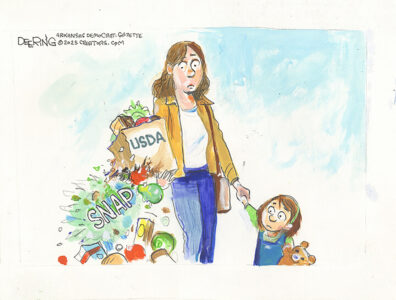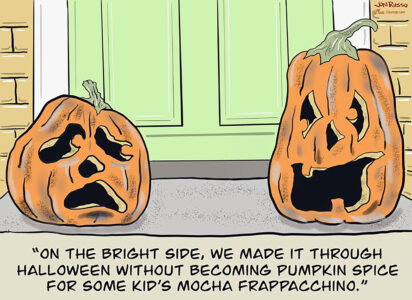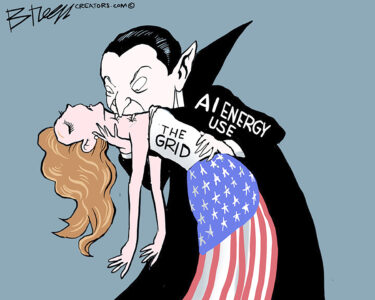Prices keep rising, but White House calls it a victory
Is “three” the new “two?” Consumer prices notched another 3% year-on-year increase in September, according to data published from the Bureau of Labor Statistics. No one in Washington seems bothered that this remains well above the Federal Reserve’s 2% inflation target.
The headline measure of consumer-price inflation rose 0.3% from August to September, with so-called core prices excluding food an energy increasing 0.2%. But core inflation also hit 3% year-on-year, a signal that households’ purchasing power continues to drop at a rapid pace. The White House press office hailed this as an anti-inflation triumph.
There’s always some excuse or explanation that politicians and Wall Street offer to say this is no big deal. One month it was health care costs, another month shelter, and so on. This month the blame goes to energy prices, which rose 1.5% from August to September. But at some point you have to admit all these add up to a persistent inflation problem. At a 3% inflation rate, the value of a dollar today would be 73.74 cents in 10 years.
There’s plenty of blame to go around. It’s obvious now that Chairman Jerome Powell’s declaration of mission-accomplished in September 2024 was premature when he began the Fed’s interest-rate cuts this cycle. Fed economists believed, and still believe, that the tightening the central bank already has done will yield slower inflation if households and businesses will wait a little longer.
Maybe it will, but not so far. Plenty of evidence from credit and equity markets suggests that financial conditions haven’t been tight for some time — from record equity valuations to unusually tight credit spreads for junk debt, to (until this week) the surging gold price and more. Yet the Fed seems poised for another 25-basis point cut in its target short-term interest rate when its Open Market Committee meets next week.
President Trump also bears some responsibility. Many of his policies, such as extending the 2017 tax reform and deregulation, should be disinflationary as they encourage more supply. But his tariffs are contributing to higher prices in many goods.
The longer the tariffs last, the more households pay, no matter how much the Administration claims companies or foreigners will eat the cost. New research from the St. Louis Fed finds tariffs account for 0.5 percentage point of the 2.85% annual inflation from June to August, using the Fed’s preferred personal-consumption-expenditure index, and about 0.4 percentage point of 2.9% core inflation.
Economists will debate whether this constitutes general inflation or merely a one-time bump in the price level. Voters will notice only that they’re paying more for the goods and services they buy.
Meanwhile, for all the controversy over Mr. Trump’s attempts to meddle with the Fed, he and Mr. Powell both seem to want lower interest rates. It makes us wonder if 3% is Washington’s new de facto inflation target. We doubt this is what anyone voted for in 2024.
ONLINE: https://www.wsj.com/opinion/inflation-3-percent-consumer-prices-washington-federal-reserve-jerome-powell-4829ae34?mod=editorials_article_pos10




